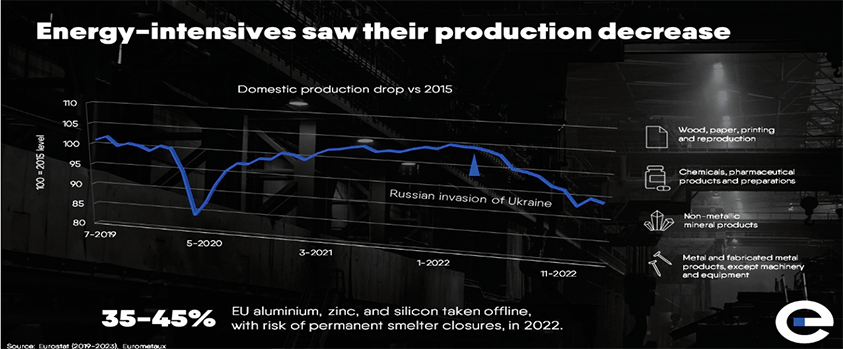
Back to basics: how to break the impasse of the EU electricity market reform
The EU is only a few months away from elections and a new political cycle. While we can celebrate the adoption of several historical climate and energy acts, which will help accelerate the transition to a cleaner and more electric EU economy, the fate of the electricity market itself still hangs in the balance. For months, a stalemate in the Council has prevented the EU from achieving progress on the reform of the electricity market, raising questions as to whether a reform can still be completed before the end of the current political mandate.
A matter of priorities
Before going into the details of the spat, let’s spend a moment on the root causes driving the debate on electricity markets. The Russian-induced gas crunch and energy crisis shocked the European economy. In 2022, gas and electricity prices reached unsustainable levels both for businesses and private citizens.
For energy-intensive industries, the situation was particularly difficult. Power was so expensive that many were forced to curtail production. In 2022, EU aluminium, zinc, and silicon production dropped between 35% to 45%, with the risk of permanent smelter closures and deindustrialisation.
Governments across Europe shelled out funds of almost €650 billion to households and businesses to mitigate the effects of soaring energy prices. On this background, it is no wonder that governments considered remedial action.
The reform of the internal electricity market stemmed from the need to ensure security of supply by providing clear long-term investment signals and reducing the exposure of customers to excessively volatile spot markets. The aim was to better shield consumers against future price shocks while providing price signals that attract more investment in cheaper homegrown clean and renewable electricity.
Over the course of the negotiations, an additional dimension has been added: the wish of individual Member States to ensure access of their respective industries to competitively priced electricity. Germany and France are at the centre of the debate in the Council with Germany advocating an industry tariff and France demanding the possibility to steer prices by introducing fixed-price contracts for existing power plants.

Whereas the power industry is firmly in favour of maintaining a strong, diversified industrial base in the EU, we don’t believe this is the right way forward. Bending the electricity market design negotiations to the national industrial policy of large Member States would set a problematic precedent among EU countries and potentially skew the playing field.
Industry should thrive across all of the EU. The solution needs to work for all Member States and take into account that there are European countries that won’t be able to provide national subsidies at the same level as the leading industrial power houses.
When in doubt leave it out
The reform, as proposed by the European Commission, promotes an evolution of the EU market that maintains a well-performing marginal pricing mechanism and leaves counterproductive national market interventions out of the picture.
Importantly, it recognises that clean and renewable power, matched by storage, flexibility and supported by a modernised electricity grid is the best structural way out of Europe’s foreign fuels dependence and the best structural way into more affordable energy bills and a competitive industry.
To this end, it enhances access to power purchase agreements, contracts for difference on new assets, more liquid forward markets, anticipatory investments for grids and capacity mechanisms to provide the long-term visibility needed to attract new investments in clean generation and infrastructure.
While some important adjustments could still be made to further improve the reform – such as avoiding mandatory hedging for retailers and dropping a counter-productive ban on disconnection of vulnerable customers – the Parliament’s text strikes a good overall balance. To unleash its benefits, however, the Council must quickly follow suit with its General Approach.
Adopting the current market reform before a new Commission is formed would bring immediate certainty for investors and consumers and limit further speculation.
The competitiveness of individual national industries should not stand in the way of the broader tool of European competitiveness: a deeply integrated European market. The clock is ticking. It is time to leave the narrow national interest behind and instead focus on delivering a well-balanced agreement that works for all the countries of the EU.




